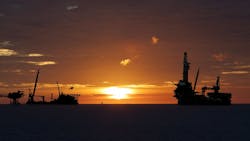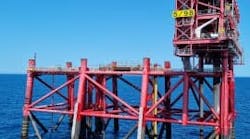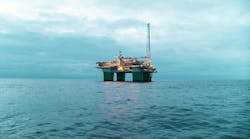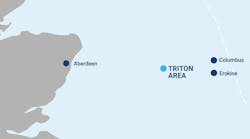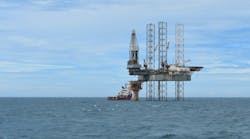Steve Grotsky * ABS
When it comes to asset capital expenditure (capex), investors, owners and operators are focused on the question of investment risk vs. investment reward. And while capex may present well on paper, the journey to operational success can be full of pitfalls and risks – both seen and unforeseen.
Although due diligence plays an important part of the risk mitigation process, it is all too often isolated with no integration across the plan, design, build/operate lifecycle of the asset. But there are benefits from taking a more holistic strategy.
Multi-layered approach
When it comes to capex, there are two fundamental questions to answer:
1) How do I substantiate that an idea is viable?
2) How do I make sure that ROI will hit the target?
It’s a question of risk vs. reward, and they’re not easy to answer—especially when the approval of shareholders and board members hangs in the balance.
The risks are many including design, regulation, manufacturing, operational and cost risk – it’s a hugely complex maze to navigate and one that ultimately takes a multi-layered approach to solve addressing questions including:
- How can we minimize exposure while maximizing profitability?
- How can we chart the smoothest journey to the desired outcome?
- Will we get the return needed from the current market we operate in?
However, the overarching question is how do all three (investors/owners/operators) integrate to achieve the outcomes they ultimately seek?
Addressing the value chain
Connecting all phases of the value chain and understanding the needs of all stakeholders by de-risking the planning, design, build, operating and decommissioning stages is crucial. The solution lies in developing connected teams across all phases, providing a seamless journey from one stage to the next.
Taking a synergized approach will help de-risk the investment at every stage of the process, enabling all specific needs to be met while providing clarity and consistency throughout the entirety of the project, creating a foundation that seamlessly connects money to the asset, and asset to its operational parameters. And by combining this with external expertise in finance, investment, appraisals and specialist advisors, it’s an approach that adds value, mitigating risk and creating efficiencies across the asset lifecycle.
Due diligence in practice
Let’s say that you are considering investing in a new asset, and go through the steps.
Step 1–Planning and feasibility. Initially, all parties share ideas and discuss the market opportunity they are looking to leverage. Conversations can cover:
- Feasibility studies
- Market analysis
- Shipyard review
- Owner/operator capability review
- Design review and verification.
Financing is also critical here with considerations and research including:
- Non-recourse
- Long-term
- Annuity-based
- Cash flow generated from revenue
- Asset market demand.
It’s all about intelligence gathering and consultation to determine viability and feasibility. A positive outcome often leads to step 2 – design.
Step 2–Design. Just because the idea looks good on paper does not mean that it is. So, step 2 concentrates on potential design issues and investment challenges. The goal is to identify the main risks at different decision gates by reviewing the commercial, technical and project documentation.
There are six major considerations:
1. Asset (specification and technical review)
2. Manufacturer (shipyard)
3. Charterer (potential user or market; charter requirement review)
4. Operator (track record)
5. Project/project team (experience, past project history)
6. Financier (financial records).
Utilizing independent specialists at this stage to provide objective third-party advice to help ensure the investment is essential. This involves workshops, engineering assessments, analysis reviews, and reports – all developed with evidence able to feedback to investors, boards and financers to support the decision-making process.
At Step 2, we effectively build the asset twice – the first time envisioning the desired result and testing it. Next, we take that knowledge and build it into the physical asset itself utilizing multi-stakeholder input.
Step 3–Construction. Planning and building are undertaken through a construction monitoring program. This program is designed to manage and mitigate risk by planning, reviewing and monitoring across the construction period, verifying compliance with applicable state/local technical specifications, standards, procedures, governmental regulations and Classification Society rules.
The intensity and frequency of the construction monitoring program will depend upon the project life stage as well as the project risk profile – leading to detailed monitoring and frequent visits during critical stages of the project, including:
- Completion risks
- Resource risks
- Operating risks
- Currency risk
- Supply chain risk.
This will also include physical visits to the shipyard, helping to ensure that the project facility is technically sound and that the build is progressing as planned.
Specialist expertise is also vital here to ensure a clear understanding of where the project is and where it needs to be, as well as identifying any potential issues or risks across the end-to-end process from the first piece of steel cut to commissioning and yard departure.
A non-linear journey
Engineering-procurement-construction projects are large, complex and capital-intensive, which bring a unique set of risks at every stage.
Through this holistic three-step approach, stakeholders can gain a much greater understanding of the potential risk profiles across each phase, enabling them to make better decisions providing a highly effective way to reduce and mitigate risk.
The author
Steve Grotsky is Vice President of Engineering for ABS Group’s Global Engineering team. He works across multiple sectors, including marine and offshore, specializing in complex capex and opex engineering projects.
